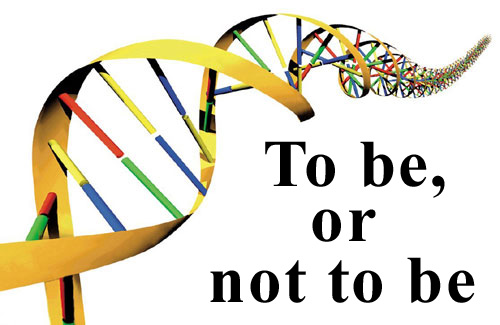 by Chris Banescu
by Chris Banescu
Christians believe that human beings were created by God in the image and likeness of their Creator. They proclaim that the entire universe, all matter, and all life were designed and brought into existence by an infinitely higher intelligence who exists outside of time and space. Materialists and atheists, on the other hand, assert that man is the result of a long mindless and chaotic process that randomly stumbled into producing matter, biological organisms, and eventually humans. Who is right?
Mathematics and reason offer us a way to test the materialist assumptions and shed some light into the insurmountable problem faced by atheists. A simple algebraic formula, that even high-school students can master, can help us quantify the probability of random actions giving rise to even the most basic order. To get a better idea of the odds involved, we will calculate the mathematical probability that the simple phrase “To be, or not to be: that is the question:“, from Shakespeare’s play Hamlet, can occur by chance.
Leaving aside for a moment the glaring contradiction that chaos could produce anything close to intelligence, reason, and logic – the very basis which allows man to observe reality, draw inferences, develop and test theories and mathematical and scientific formulas, and reach reliable conclusions – let us proceed.
Probability and Permutations
First, a quick review of probability concepts:
Probability is defined as
(1) “the extent to which something is probable; the likelihood of something happening or being the case”, or
(2) “the chance that something will happen – how likely it is that some event will happen.” (MathisFun)
A Permutation is defined as
(1) “a way, especially one of several possible variations, in which a set or number of things can be ordered or arranged”, or
(2) “an ordered arrangement of numbers, letters, terms, etc., of a set into specified groups.”
There are two different types of permutations: (a) with repetition and (b) without repetition. Since our phrase requires that we reuse letters, spaces, and punctuation symbols, we will calculate the number of permutations with repetition.
Permutations with Repetition – Mathematical Formula 
From MathisFun.com website we have a concise explanation of the mathematical formula to use:
– When you have n things to choose from … you have n choices each time!
– When choosing r of them, the permutations are: n × n × … (r times) = nr. In other words, there are n possibilities for the first choice, then there are n possibilities for the second choice, and so on, multiplying each time.
The formula is simply nr (n raised to the power of r), where n is the number of things to choose from, and you choose r of them at a time.
Permutations with Repetition – Simple Example
For example, let us calculate how many 2 letter permutations of the letters a, b, c are possible.
We have 3 letters (things) to chose from and we need to chose 2 of them at a time.
Based on our formula: n = 3 and r = 2. This gives us 32, which equals nine (9) possible permutations = aa, bb, cc, ab, ac, ba, bc, ca, cb.
Shakespearean Permutations Exercise
Now, let’s return to the “To be, or not to be: that is the question:” Shakespearean phrase. The expression itself is 42 characters long (counting all the letters + spaces + punctuation symbols).
![]()
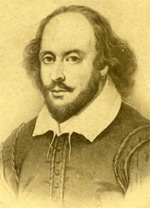
It is made up of 52 total possible letters. Since there are 26 letters in the English alphabet, this gives us 52 possible letter arrangements (26 lower + 26 upper case). Add in the 2 punctuation symbols (comma and colon) and the space, and we have 55 possible options (52 letters + 2 symbols + 1 space) for each spot in the 42 total characters space needed for our phrase.
Using the formula above n = 55 (things to chose from) and r = 42 (things chosen at a time) gives us 5542 total possible permutations (55 raised to the power of 42) needed to ultimately hit on the required expression randomly.
The actual value of the 5542number is 1.245182357650 × 1073 or written out fully 12,451,823,576,496,486,040,270,183,548,779,021,694,751,127,370,182,075,537,741,184,234,619,140,625
(bolded each Trillion range for emphasis and easier counting).
One (1) Trillion = 1,000,000,000,000 (1012, 1 followed by 12 zeros)
This means that the probability that the simple phrase “To be, or not to be: that is the question:” will occur via a haphazard process, as atheists and materialists demand, is approximately, 1 in 12.5 Trillion Trillion Trillion Trillion Trillion Trillion.
Supercomputer Created Permutations 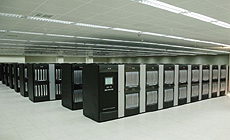
To put things into perspective, let’s use China’s Tianhe-1 supercomputer, currently the world’s fastest computer, to theoretically create the required number of permutations needed to reach a 100% probability that the same phrase is generated randomly. Tianhe-1 is capable of powering through 2.507 petaflops per second, approximately 2,507 trillion calculations per second.
For simplicity’s sake, let’s assume that our computer can crunch through 3,000 trillion permutations per second (slightly faster than Tianhe-1). At its current speed, that supercomputer will need to operate non-stop for 131,614,911,809,746,385,509,366,898,663,739,025,185,514,199,329,676 years to insure that we wind up with precisely those 10 words, in that exact order, with the proper punctuation and spacing, via chance alone. That’s approximately 131 Trillion Trillion Trillion Trillion years of number crunching!
Even if humanity was able to build and bring one trillion Tianhe-1 supercomputers online (an impossible task) to help run through these permutations, we would still need 131 Trillion Trillion Trillion years of continuous permutations to achieve the required probability.
By comparison, astronomers presently estimate that our universe is a meager 15 billion years old. Even allowing for astonishing scientific advances, assuming that future supercomputers will reach speeds orders of magnitude faster than current technology permits, and assuming that mankind builds billions of these supercomputers to run these calculations simultaneously, is not enough, we would still be short by trillions of years of time. Entire life spans of countless universes will not give us enough computing time to insure a probability of 100% needed to arrive at Hamlet’s famous expression via random actions.
The mathematics become even more shocking when we look at the super-complex and enormous information stored in the human DNA code and calculate the probabilities that it also came about as a result of chance and via purely accidental processes.
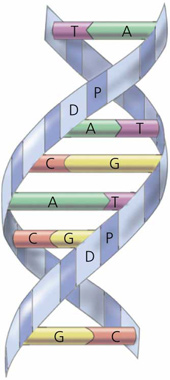 Human DNA Definition and Size
Human DNA Definition and Size
DNA stands for Deoxyribonucleic acid, one of two different types of molecules (DNA and RNA) that encode genetic information in all living organisms. DNA contains the genetic instructions used in the development and functioning of all living things on earth, from amoebas to human beings.
According to MedicineNet, “DNA is a double-stranded molecule held together by weak hydrogen bonds between base pairs of nucleotides. The molecule forms a double helix in which two strands of DNA spiral about one other. The double helix looks something like an immensely long ladder twisted into a helix, or coil.”
There are four nucleotides in DNA. Each nucleotide contains a base: adenine (A), thymine (T), guanine (G), and cytosine (C). The specific sequences of these four bases, A, T, G, and C, determine how individuals differ from other humans and other living organisms. Since the bases are paired, A with T and G with C, scientists often use the term “base pairs”, because each type of nucleotide base on one strand normally interacts with just one type of nucleotide base on the other strand. This is called complementary base pairing.
The DNA in each human cell contains approximately 3 Billion (3,000,000,000) of these base pairs. If we were to type out the unique genetic code it contains, using the four letters, A, T, G, and C, and assuming about 2,400 letters per page and 500 pages per book, it would require 2,500 full books to complete the full sequence of a person’s specific DNA information.
The latest information from the Human Genome Project indicates that the human genome actually contains 3,164.7 million unique and distinct chemical nucleotide bases (A, C, T, and G). But, for our purposes we will stick with the 3,000 million (3 Billion) base pairs number.
Calculating Human DNA Possible Permutations
Let us now evaluate the mathematical probabilities that the human DNA information came about by sheer chance, via random processes. For simplicity, we will ignore that each nucleotide base A, T, G, and C represents more complex molecules, with their own inherent structure made out of individual atoms, and consider them just letters.
Since the DNA strand uses a combination of 4 letters, this gives us 4 things to chose from. Because we need 3 billion pairs to form a complete human being, this gives us 3,000,000,000 things to choose at a time.
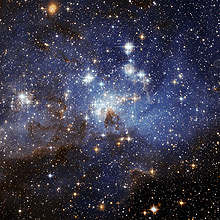
Using the permutations formula above n = 4 (things to chose from) and r = 3,000,000,000 (things chosen at a time) gives us 43,000,000,000 (n r) total possible permutations (4 raised to the power of 3 Billion) needed to randomly arrive at a single properly sequenced DNA code strand.
The 43,000,000,000 number is equal to approximately 9.6358 x 101,806,179,973 total possible permutations (that’s 9.6358 x 10 to the power of 1.8 billion), roughly 9.6358 with 1,806,179,973 zeroes after it. This gargantuan number represents the number of possible tries needed to reach 100% probability of building just one strand of the total DNA sequencing required to create a human being. There is nothing in the English language that can describe such an immense number or anything on this earth or the entire universe that comes even close to providing any basis of comparison. This vast number completely overshadows even the total number of atoms in the observable universe, estimated in the range of 1078 to 1082.
I would like to attempt and calculate the many centillions upon centillions of years (1 centillion = 10303 in America or 10600 in England) it would take trillions of humanity’s most powerful supercomputers to generate the total number of permutations required to randomly arrive at just one complete set of human DNA instructions. But I think you get my point!
Overwhelming Odds in GOD’s Favor 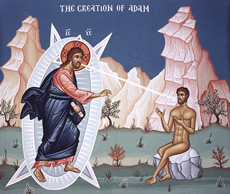
The odds are overwhelmingly stacked against the atheist presumption that random processes and sufficient time could produce any order, structure, or life. Even the billions upon billions of years materialists claim are enough (even assuming the earth is about 4.5 billion years old) to allow a mindless Nature the chance to build our entire ecosystem and give an amoeba time to randomly “evolve” into a man are wholly inadequate; laughable actually. Mathematics dictate that 5 billion years of random events cannot possibly reproduce even a simple phrase from Shakespeare, let alone the 3 Billion precisely structured and programmed base pairs molecules of the human DNA code.
I hope you now understand why Christians rightly believe and insist that the universe and all life were created and structured by a infinitely greater power and intelligence. That is the truth. Mathematics and reason provide us with a clear window into the actual probabilities involved. God wins hands down. It’s not even close!
UPDATE – 8/4/2016
Since writing the article in 2011, I have located a hypercalculator (mrob.com/pub/comp/hypercalc/hypercalc-javascript.html) capable of extremely large numbers calculations. I have revised my analysis using the full 3,000,000,000 billion base pairs of the human DNA.
I have also discovered more English names of the first 10,000 powers of 10. They can be viewed here: www.isthe.com/chongo/tech/math/number/tenpower.html. The largest of them, 1010,000 is named ten tremilliatrecendotrigintillion.

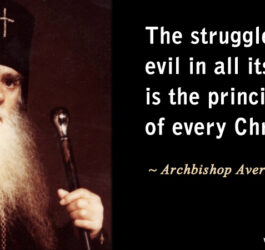
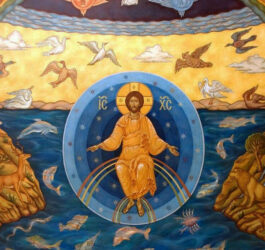
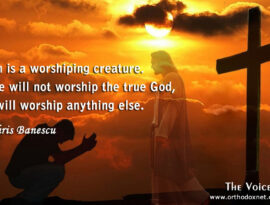
Excellent! It proves the point by using strict mathematical calculations to prove that it is impossible to create such perfect thing as a human body with such perfect functionality from the micto to macrosises. O humans! o Tempora; and some scientist want to play GOD using DNA and making clones, and still cannot get it. Do not try to be GOD.You will fall miserably.Better pray and believe.
I agree with your basic premise. However, I might point out that an evolutionist (which I am not) might argue that you should use a genetic algorithm to search the space more efficiently. It will never achieve 100% certainty at finding the current genome, but it never had a specific target in mind to begin with. It will increase the chances of finding a reasonable answer sooner. The theoretical process of evolution does not itself generate all the permutations. That said, each permutation may take hundreds or thousands of years to occur. Just something to think about.
The key is that the modern theory of human origins is nothing but wild speculation. My favorite argument in this regard is by G. K. Chesterton.